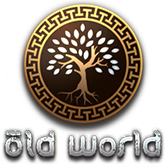Children in the ancient world are, generally speaking, underrepresented in art, literature, and archaeological evidence when compared with the larger population owing to their status as wards of adults who are often, though not always, the focus of works depicting them with their children. Children are often only depicted alone on funerary monuments.
Even on tombstones, however, the child is frequently depicted as a secondary character among the mourning adults. The concept of "childhood" as understood in the present is fairly recent and, in the ancient world, was not unknown but certainly not defined as it widely is today. Children were understood as continuations of a family line who would one day, if they lived to maturity, assume the roles of their parents, but they were not recognized as individuals whose lives were interesting enough to warrant a work of art or, unless a eulogy, a poem.
Lower-class children were rarely educated and, by age seven (if not younger), were expected to help with housework or their fathers' profession. Upper-class children in ancient Rome began primary school at age 7, and those girls who were allowed to attend left at the age of 13 to learn domestic responsibilities while boys continued on only if their fathers' professions involved literacy. In ancient Egypt and Mesopotamia, boys (and some girls) continued their education until they graduated as scribes and could then work as physicians, clergy, government bureaucrats, or other professions requiring a knowledge of the written word.
Even so, children in the ancient world, as now, played with dolls, toy soldiers, wooden swords, pull-toys, balls, and other playthings. Children also participated in sports and played board games. The following gallery presents a sampling of artifacts and artworks related to these children of the ancient past.

